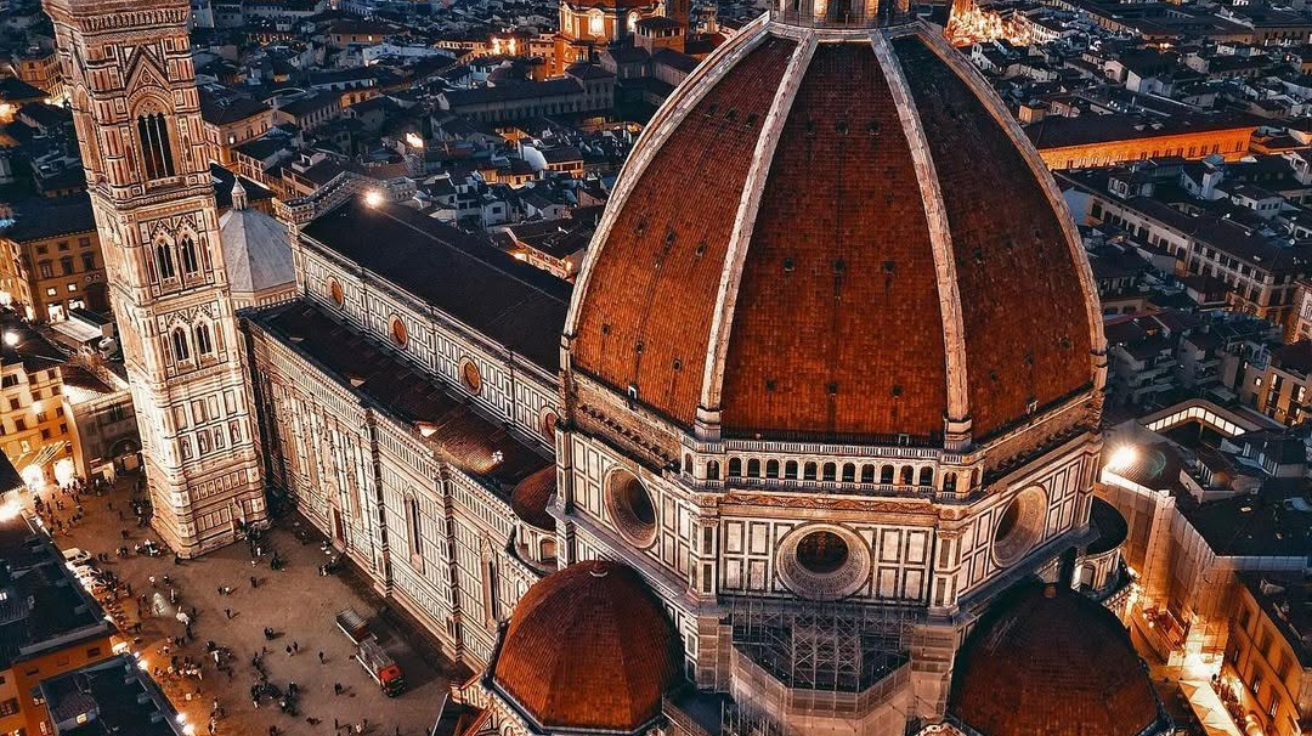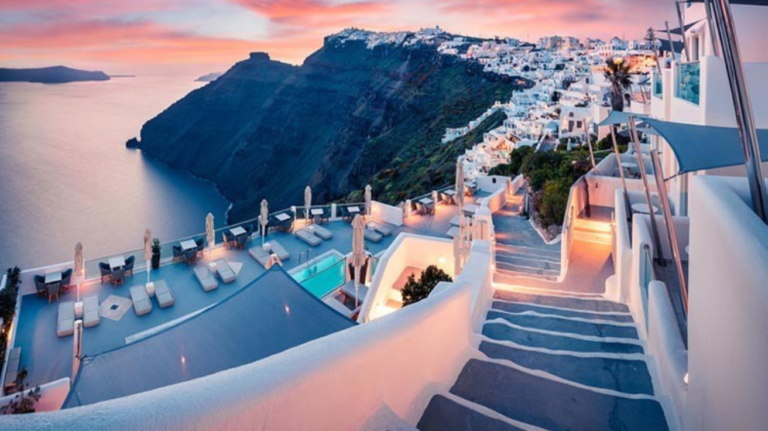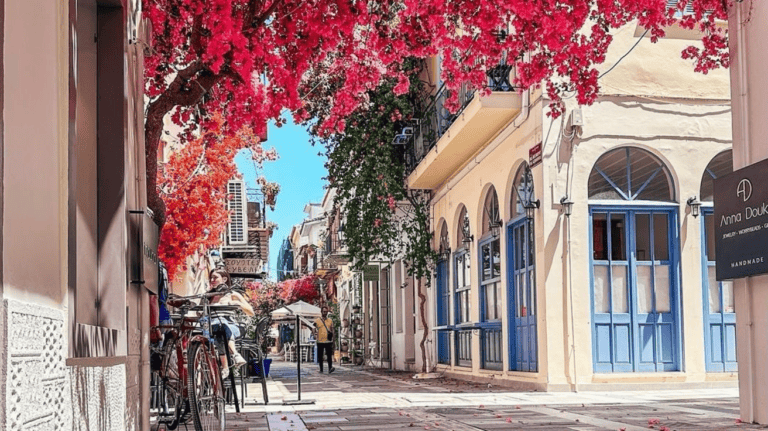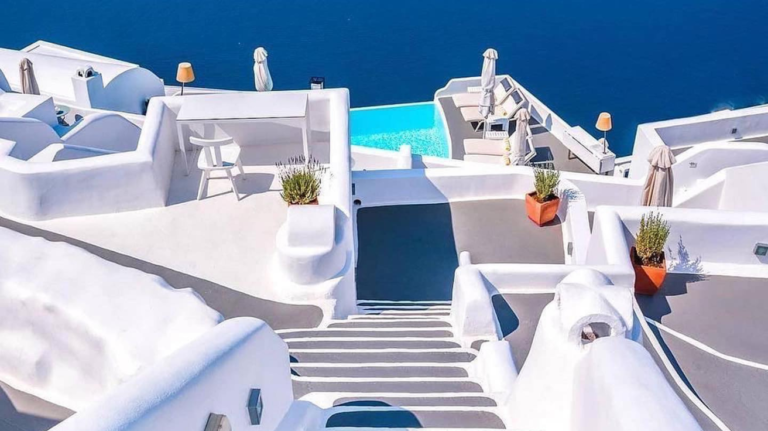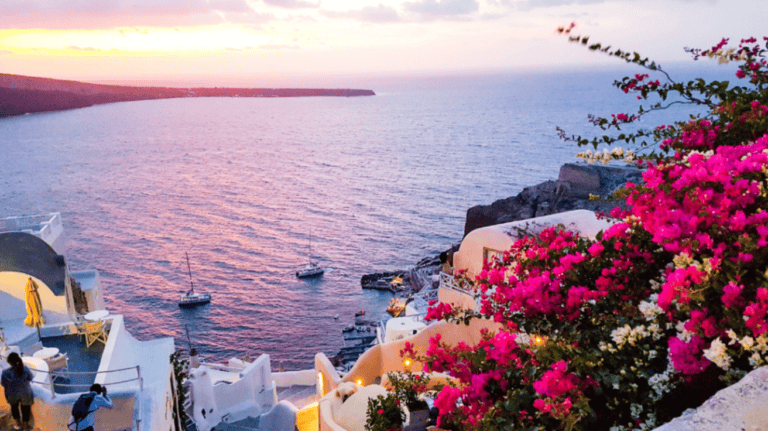15 Best Things to Do in Florence, Italy
Welcome to Florence, the cradle of the Renaissance and a city that has inspired travelers for centuries. Nestled in the heart of Tuscany, Florence is a vibrant blend of art, history, and culture, offering something for every kind of explorer.
Whether you’re an art enthusiast, a history buff, a foodie, or simply someone seeking beauty and inspiration, Florence has it all.
As a solo traveler, Florence is a dream destination. Its compact layout and walkable streets make it easy to navigate, while the abundance of museums, landmarks, and culinary delights ensures you’ll never run out of things to do.
The city’s charm lies not only in its famous attractions but also in its quieter corners—hidden alleys, artisan workshops, and sun-dappled piazzas where you can soak in the essence of Italian life.
This guide will take you through 15 of the best things to do in Florence, designed with solo travelers in mind. From must-see landmarks like the iconic Duomo and Uffizi Gallery to unique experiences like taking a Tuscan cooking class or enjoying a sunset at Piazzale Michelangelo, each suggestion is aimed at helping you create unforgettable memories.
Get ready to immerse yourself in Florence’s timeless allure and embrace the freedom of discovering this magical city on your terms. Whether it’s your first visit or your fifth, Florence never fails to surprise and enchant.
The Duomo (Cathedral of Santa Maria del Fiore)
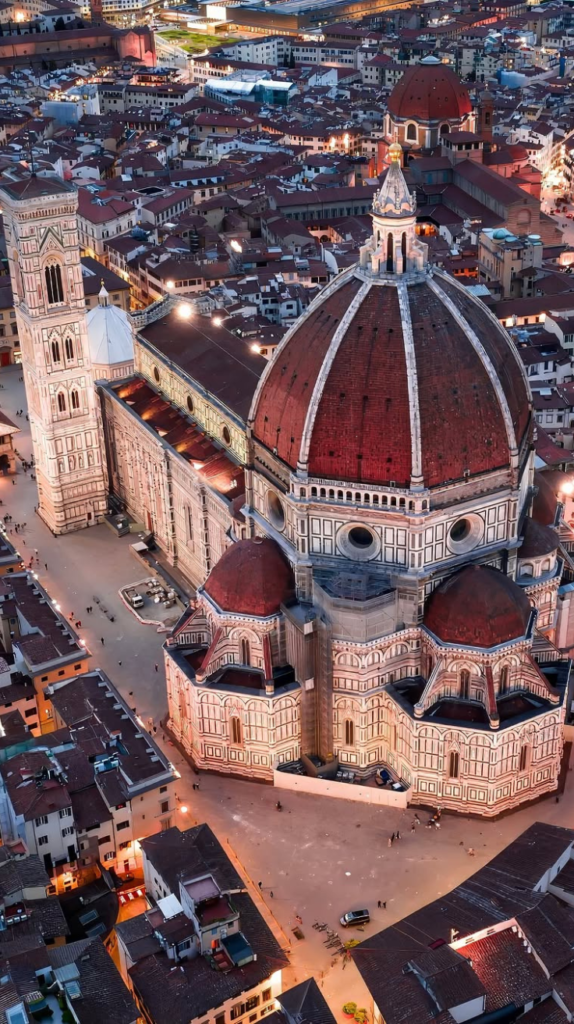
The Duomo, or the Cathedral of Santa Maria del Fiore, is Florence’s most iconic landmark and a masterpiece of Gothic and Renaissance architecture.
Dominating the city’s skyline, its impressive dome, designed by Filippo Brunelleschi, is an engineering marvel that continues to awe visitors centuries after its completion. The cathedral’s intricate marble façade, adorned in shades of green, pink, and white, is a feast for the eyes and a testament to Florence’s artistic legacy.
Inside, the vast interior is relatively austere, allowing visitors to focus on the grandeur of the dome’s frescoes. Painted by Giorgio Vasari and Federico Zuccari, these breathtaking works depict the Last Judgment, offering a dramatic contrast to the exterior’s intricate detailing.
For the adventurous, climbing the 463 steps to the dome’s summit is a must. The ascent provides an up-close view of the frescoes and leads to panoramic vistas of Florence from the top—a reward well worth the effort.
Practical tips: Arrive early or book tickets in advance to avoid long lines. Wear comfortable shoes, as the climb can be strenuous. Don’t miss the adjacent Baptistery with its famous bronze doors, known as the “Gates of Paradise,” and the Campanile for even more stunning views.
Watch a Ponte Vecchio Sunset
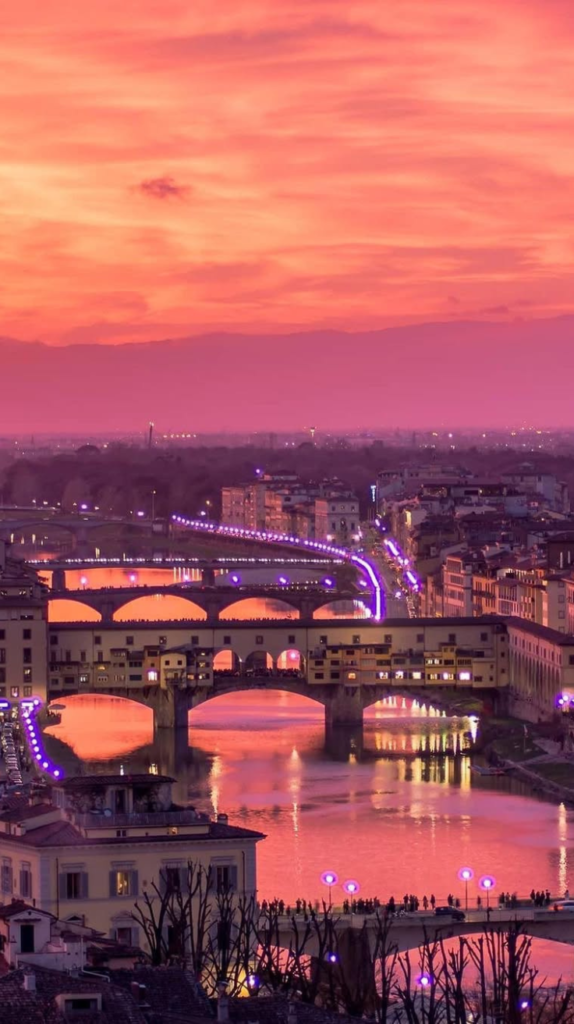
The Ponte Vecchio, Florence’s oldest and most iconic bridge, spans the Arno River, offering a stunning blend of history, architecture, and vibrant culture.
Built in the 14th century, this medieval stone bridge is famous for its picturesque shops, originally home to butchers and fishmongers. Today, it’s a hub for goldsmiths and jewelers, making it a glittering shopping destination for unique Italian craftsmanship.
One of the bridge’s most distinctive features is the Vasari Corridor, an elevated walkway commissioned by Cosimo I de’ Medici in 1565.
This secret passage connects the Uffizi Gallery to the Pitti Palace, allowing the Medici family to move between their residence and government offices in privacy. While the corridor is not always open to the public, its history adds an air of intrigue to the bridge.
The Ponte Vecchio is particularly magical at sunset when the golden light reflects off the river, creating a romantic ambiance that attracts artists, photographers, and couples.
Practical tips: Visit early in the morning or late in the evening to enjoy a quieter experience. Don’t forget to take a photo from one of the nearby bridges, like the Ponte Santa Trinita, for the best views of the Ponte Vecchio’s timeless beauty.
Palazzo Vecchio for Art and History
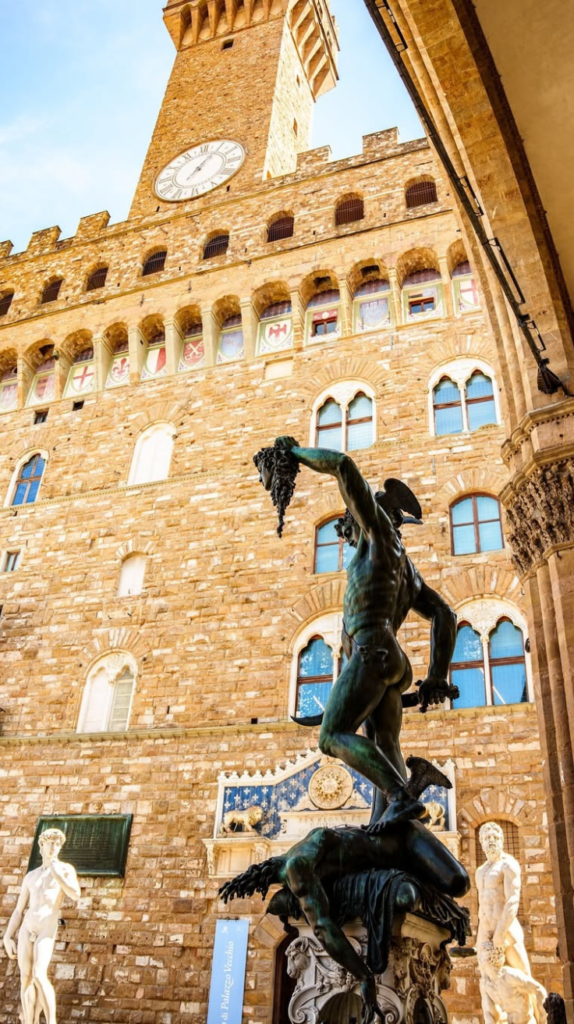
The Palazzo Vecchio, Florence’s historic town hall, stands proudly in Piazza della Signoria as a symbol of the city’s political and cultural legacy.
Built in 1299, this fortress-like structure with its crenelated walls and towering Arnolfo Tower has been a centerpiece of Florentine power for centuries. Its architecture is a striking blend of medieval strength and Renaissance elegance, reflecting Florence’s transition through eras of artistic and political innovation.
Inside, the Palazzo Vecchio is a treasure trove of art and history. The Salone dei Cinquecento, a grand hall originally used for council meetings, is adorned with intricate frescoes depicting Florence’s military victories.
Visitors can admire works by Giorgio Vasari, including the ceiling panels that narrate the city’s triumphs. The Medici apartments, richly decorated with tapestries and paintings, offer a glimpse into the opulent lifestyle of the powerful Medici family.
Climbing the Arnolfo Tower is a must for those seeking panoramic views of Florence’s rooftops and the surrounding Tuscan countryside. From this vantage point, the city’s iconic landmarks, including the Duomo and Ponte Vecchio, appear like a living postcard.
Practical tips: Reserve tickets in advance, especially during peak seasons. Consider a guided tour to fully appreciate the rich history and artistry within this remarkable palace.
Uffizi Gallery for Some Famous Masterpieces
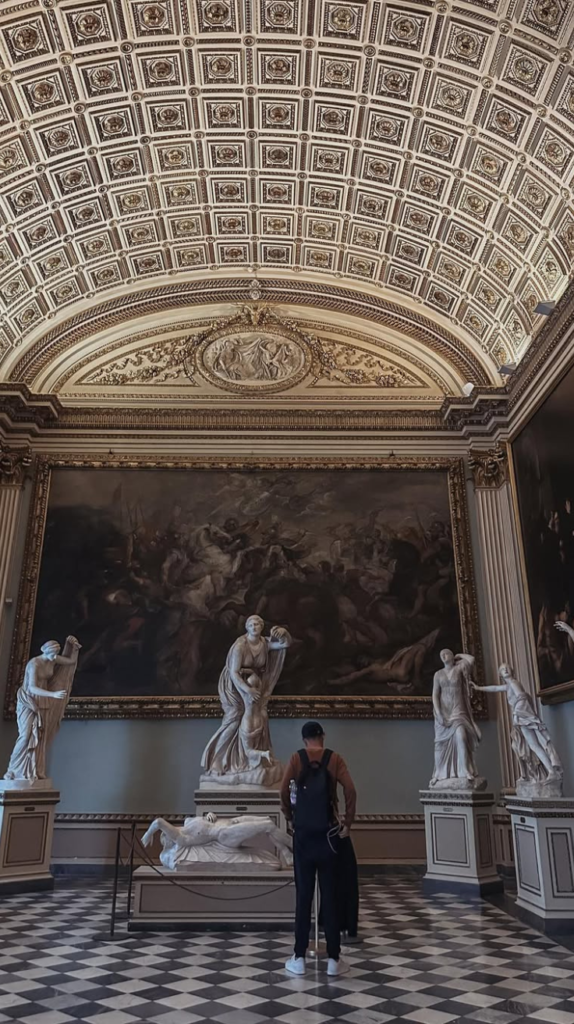
The Uffizi Gallery is a cornerstone of Florence’s artistic heritage, housing one of the most renowned art collections in the world.
Located along the Arno River, this historic museum was originally designed by Giorgio Vasari in 1560 to serve as administrative offices for the Medici family. Today, it stands as a testament to their enduring patronage of the arts, attracting millions of visitors annually.
Inside, the Uffizi unfolds as a treasure trove of masterpieces spanning centuries. Highlights include Botticelli’s “The Birth of Venus” and “Primavera,” both epitomizing the grace and beauty of Renaissance art.
Leonardo da Vinci’s “Annunciation” and Michelangelo’s “Doni Tondo” offer glimpses into the genius of these legendary artists. Works by Caravaggio, Titian, and Raphael further enrich the collection, making the gallery an unparalleled artistic journey.
The gallery’s layout follows a chronological sequence, guiding visitors through the evolution of Western art. Large windows provide stunning views of Florence, adding a touch of serenity to the experience.
Practical tips: Purchase tickets online to skip the often lengthy queues. Allow at least three hours to explore the collection thoroughly. A guided tour can enhance your visit, offering deeper insights into the artworks and the fascinating history behind them.
Accademia Gallery to See Michelangeo’s David
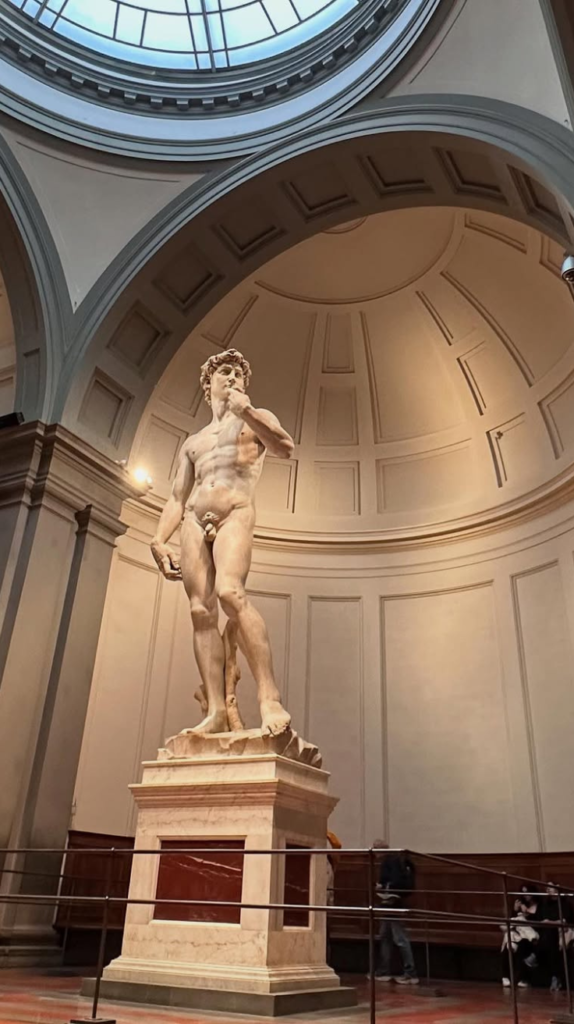
The Accademia Gallery in Florence is world-famous for housing Michelangelo’s David, a masterpiece that has become a global symbol of human creativity and artistic perfection.
Carved from a single block of Carrara marble, this 17-foot-tall statue captures the biblical hero in a moment of calm before battle, his tense muscles and focused gaze reflecting both physical and emotional intensity.
Seeing David up close is a transcendent experience, as its intricate details—veins, sinews, and lifelike proportions—reveal Michelangelo’s unparalleled skill.
Beyond David, the Accademia features other works by Michelangelo, such as the Prisoners (or Slaves), unfinished sculptures that seem to emerge from the marble, offering insight into the artist’s creative process. These pieces convey a powerful sense of struggle and raw emotion.
The gallery also includes an impressive collection of religious paintings from the 13th to 16th centuries, as well as a remarkable display of musical instruments from the Medici family’s collection. These artifacts provide a broader context of Florence’s rich cultural history.
Practical tips: Book tickets online to skip the queues, as the gallery is one of Florence’s most popular attractions. Visit early in the morning or late in the afternoon to avoid peak crowds, and consider joining a guided tour to enrich your understanding of the artwork.
Pitti Palace and Boboli Gardens
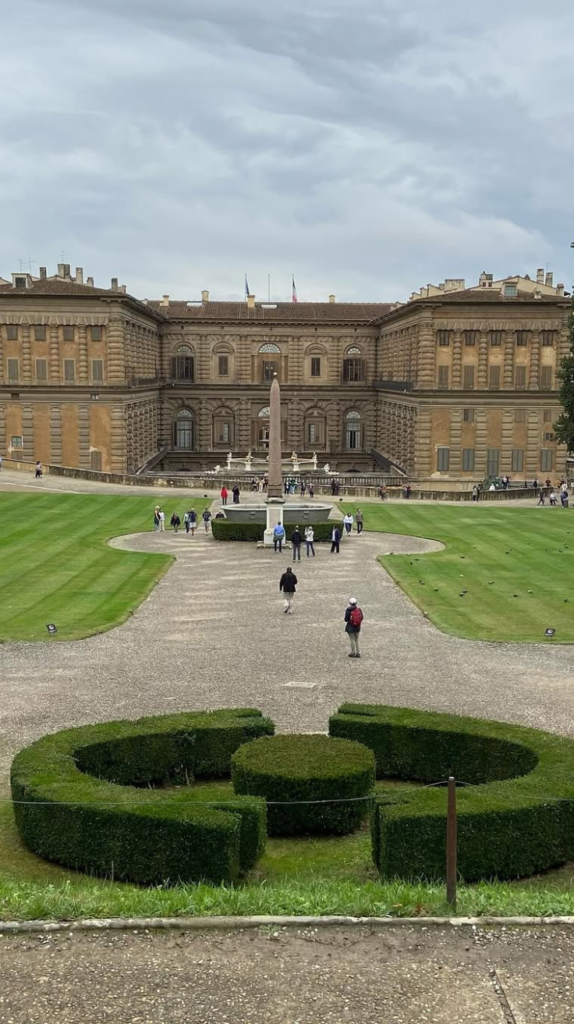
The Pitti Palace, a grand Renaissance residence, stands as a symbol of Florence’s wealth and artistic legacy. Originally built for the Pitti family in the 15th century, it later became the principal residence of the powerful Medici family. Today, it houses several museums, each offering a unique glimpse into Florence’s cultural and artistic heritage.
The Palatine Gallery, located within the palace, showcases an exquisite collection of Renaissance and Baroque art, featuring works by Raphael, Titian, and Rubens. The opulent decor of the rooms, with gilded frames, intricate frescoes, and sumptuous furnishings, provides a glimpse into the grandeur of Medici life.
Other highlights include the Treasury of the Grand Dukes, featuring dazzling jewels and artifacts, and the Museum of Costume and Fashion, which traces centuries of Italian style.
Beyond the palace lies the Boboli Gardens, an expansive outdoor masterpiece of landscape design. Created in the 16th century, the gardens feature manicured lawns, ornate fountains, sculptures, and shaded pathways.
Highlights include the iconic Neptune Fountain and the Grotto of Buontalenti, an enchanting blend of art and nature.
Practical tips: Allocate half a day to explore both the palace and gardens. Wear comfortable shoes, as the gardens cover a large area. Book tickets online to save time.
Shop and Eat at the San Lorenzo Market
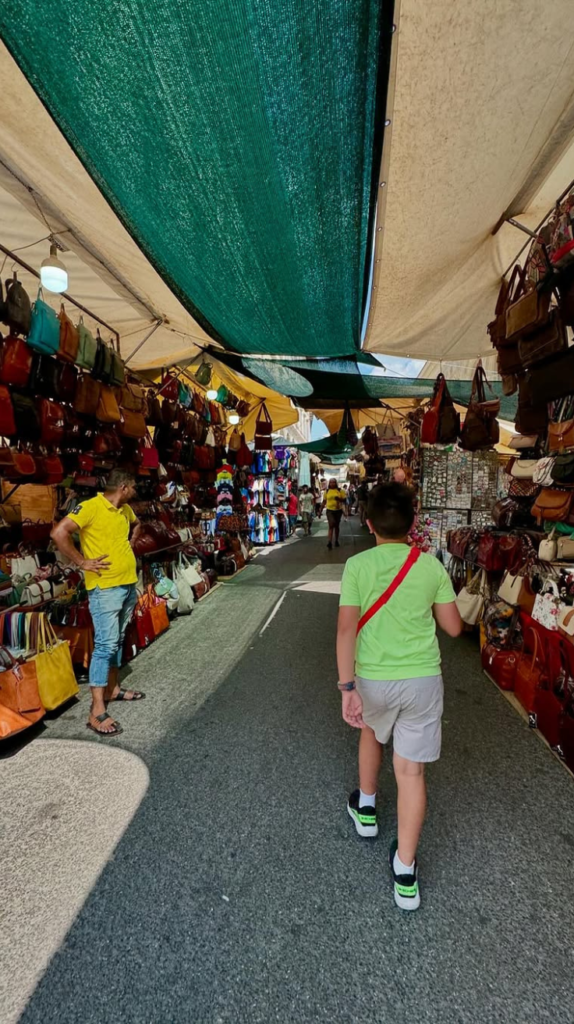
San Lorenzo Market is a vibrant hub of Florentine culture and a must-visit destination for travelers seeking an authentic taste of the city. Located near the Basilica of San Lorenzo, the market is divided into two main sections: the indoor Mercato Centrale and the outdoor street market.
The Mercato Centrale is a foodie’s paradise, offering a wide range of fresh produce, artisanal cheeses, cured meats, and other culinary delights.
Upstairs, the modern food court features stalls serving freshly prepared Italian dishes, from handmade pasta and wood-fired pizzas to Tuscan specialties like lampredotto, a traditional tripe sandwich. It’s an ideal spot for a casual meal or to pick up gourmet gifts.
The outdoor market, sprawling across the surrounding streets, is known for its leather goods, scarves, jewelry, and souvenirs. Florence’s reputation for high-quality leather is evident here, with stalls offering a variety of jackets, bags, and belts. While browsing, be prepared to haggle for the best prices—a fun way to interact with local vendors.
Practical tips: Visit early in the day for the best selection and a less crowded experience. If shopping for leather, inspect items carefully for quality. Don’t forget to savor a gelato or espresso from one of the nearby cafes to round off your visit!
Brancacci Chapel Sistine Chapel of the Early Renaissance
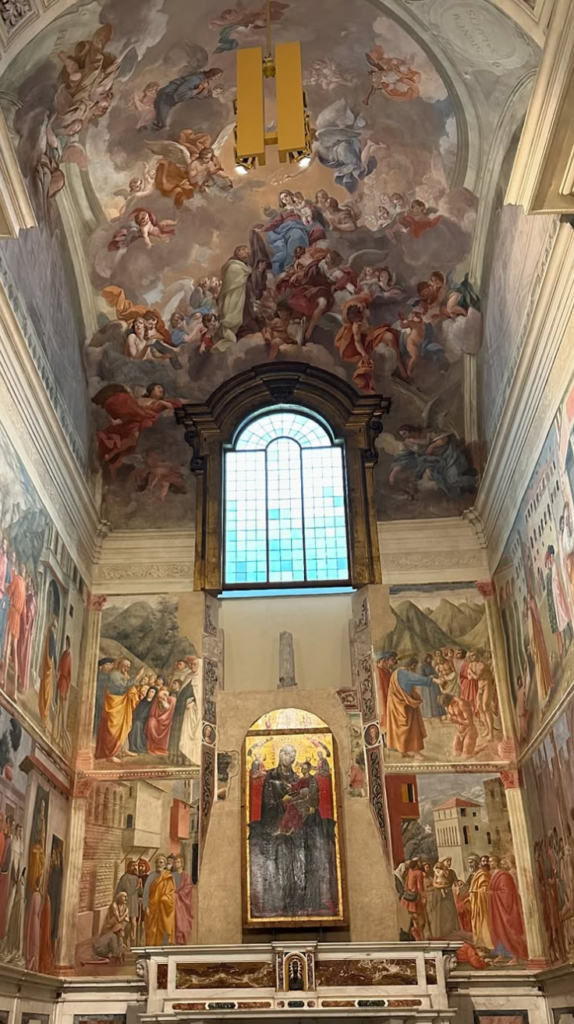
The Brancacci Chapel, nestled within the Church of Santa Maria del Carmine in Florence, is a hidden gem that art lovers and history enthusiasts should not miss.
Renowned for its groundbreaking frescoes by Masaccio and Masolino, later completed by Filippino Lippi, the chapel is often referred to as the “Sistine Chapel of the Early Renaissance” for its monumental impact on Western art.
The fresco cycle depicts scenes from the life of Saint Peter, blending biblical storytelling with revolutionary artistic techniques. Masaccio’s use of perspective and naturalistic figures was groundbreaking, giving depth and realism to the compositions.
Key scenes, such as The Tribute Money and The Expulsion of Adam and Eve from Eden, are particularly striking. The former is celebrated for its dynamic narrative and atmospheric perspective, while the latter captures raw emotion through Adam and Eve’s anguished expressions.
Visitors can marvel at the intricate details, vivid colors, and the interplay of light and shadow that bring these frescoes to life. The chapel’s intimate setting allows for a close-up view of the artistry that influenced generations of Renaissance masters, including Michelangelo.
Practical tips: Reservations are required, so book in advance. Allow time to explore the nearby Oltrarno district, known for its artisan workshops and charming atmosphere.
Indulge in Traditional Tuscan Cuisine
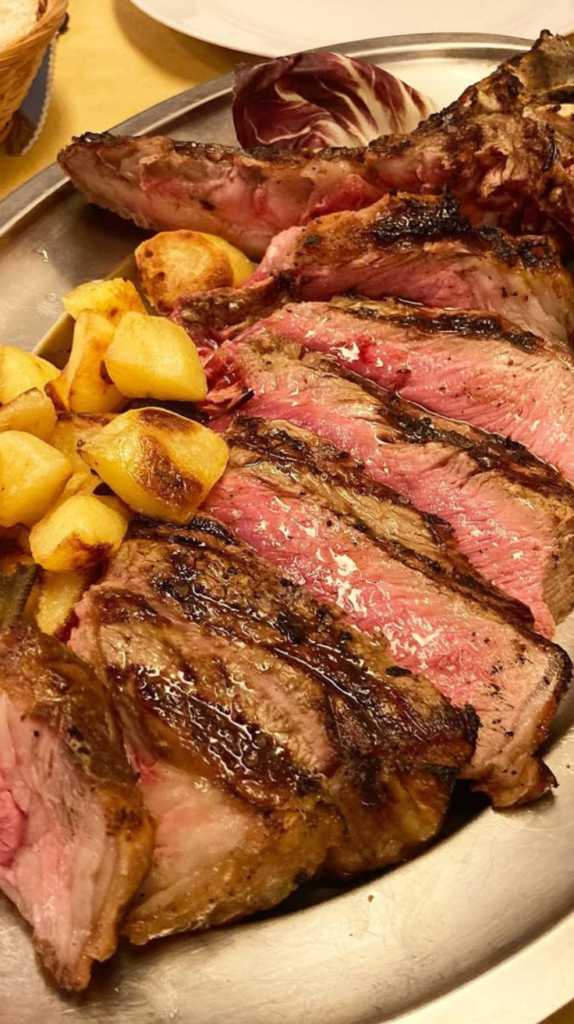
Tuscan cuisine is a celebration of simplicity, fresh ingredients, and time-honored techniques, making it one of Italy’s most beloved regional food traditions. Rooted in the concept of cucina povera (peasant cooking), it focuses on hearty, flavorful dishes crafted from local and seasonal ingredients.
A Tuscan meal often begins with antipasti, such as bruschetta al pomodoro, toasted bread topped with fresh tomatoes, olive oil, and basil, or crostini di fegatini, slices of bread topped with a rich chicken liver pâté.
Soups are another highlight, with classics like ribollita and pappa al pomodoro, both showcasing the ingenious use of stale bread, vegetables, and aromatic olive oil.
For mains, the iconic bistecca alla Fiorentina, a thick-cut, bone-in T-bone steak, is a must-try. Traditionally grilled over an open flame and served rare, it embodies the robust flavors of Tuscany. Pasta dishes like pappardelle al cinghiale (wild boar ragu) and gnudi (spinach and ricotta dumplings) are equally indulgent.
Desserts include the almond-infused cantucci cookies, often paired with a glass of vin santo, a sweet dessert wine.
Practical tip: Seek out small, family-run trattorias for an authentic dining experience, and don’t miss the chance to sample the region’s famed Chianti wines alongside your meal.
Gelaterias in Florence for Gelato Lovers
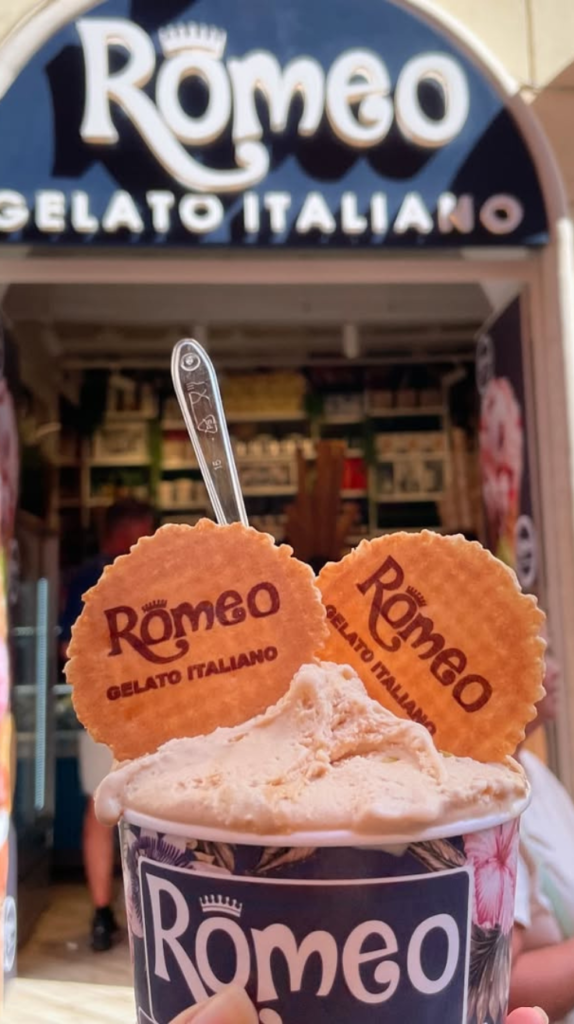
Florence is a paradise for gelato lovers, offering some of the finest artisanal gelaterias in Italy. With its rich history dating back to the Renaissance, gelato in Florence is not just a treat but a cultural experience.
Walking through the city’s historic streets, you’ll find gelaterias showcasing a dazzling array of flavors, from traditional classics to innovative combinations.
Traditional flavors like pistacchio, nocciola (hazelnut), stracciatella (chocolate chip), and cioccolato fondente (dark chocolate) are must-tries.
Many gelaterias also celebrate local ingredients, offering unique options like ricotta e fichi (ricotta and fig) or vin santo (a Tuscan dessert wine). Seasonal fruit sorbets, made with fresh, ripe produce, are perfect for those seeking a refreshing alternative.
To identify authentic gelato, look for natural colors and flat, smooth presentations rather than overly bright or fluffy displays. Artisanal gelaterias often list the origin of their ingredients, such as Sicilian pistachios or Tuscan milk, ensuring a genuine experience.
Practical tips: Visit renowned gelaterias like Gelateria dei Neri, La Carraia, or Vivoli for consistently high-quality scoops. Take your gelato to-go and enjoy it while strolling along the Arno River or relaxing in Piazza della Signoria for the perfect Florence moment.
Piazzale Michelangelo for Stunning Views
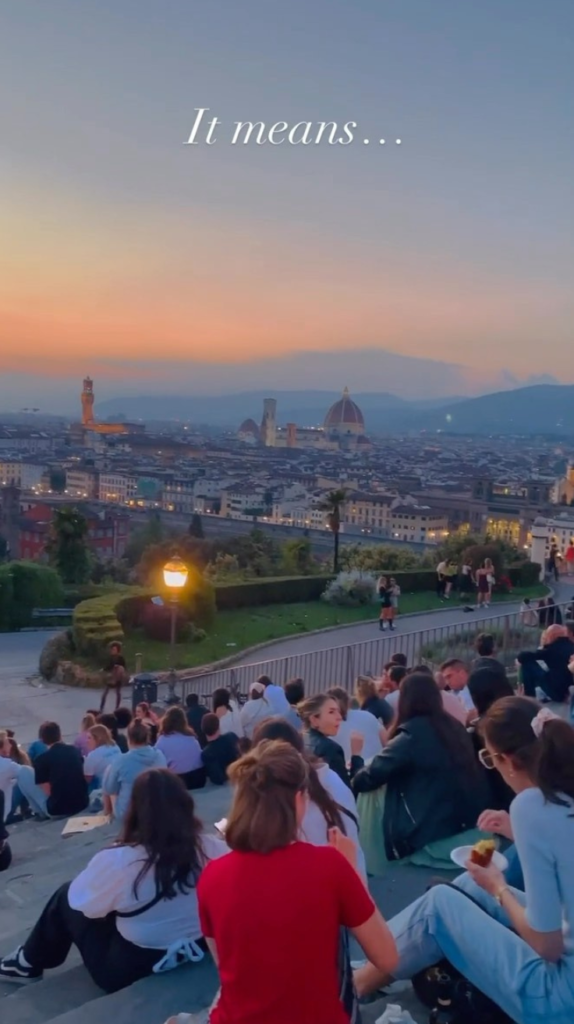
Piazzale Michelangelo is Florence’s most famous viewpoint, offering breathtaking panoramic views of the city. Perched atop a hill on the south bank of the Arno River, this terrace is a must-visit spot for anyone looking to admire Florence’s skyline in all its glory.
From here, you can see the city’s iconic landmarks, including the Duomo, Palazzo Vecchio, Ponte Vecchio, and the Basilica of Santa Croce, framed by the rolling Tuscan hills in the background.
The square, designed by architect Giuseppe Poggi in 1869, was part of a grand urban renewal project. At its center stands a bronze replica of Michelangelo’s David, paying homage to the artist’s genius. While the replica doesn’t rival the original at the Accademia Gallery, it adds a sense of artistic charm to the space.
Piazzale Michelangelo is particularly magical during sunrise and sunset when the golden light bathes the city, creating a picture-perfect moment. It’s a favorite spot for photographers, couples, and travelers seeking a serene escape from the bustling city center.
Practical tips: Reach the piazzale by foot via a scenic climb, or take a bus for convenience. Consider enjoying a gelato or a meal at one of the nearby cafes while soaking in the view. Bring your camera and stay until twilight to see Florence illuminated under the night sky.
Walk Along the Arno River
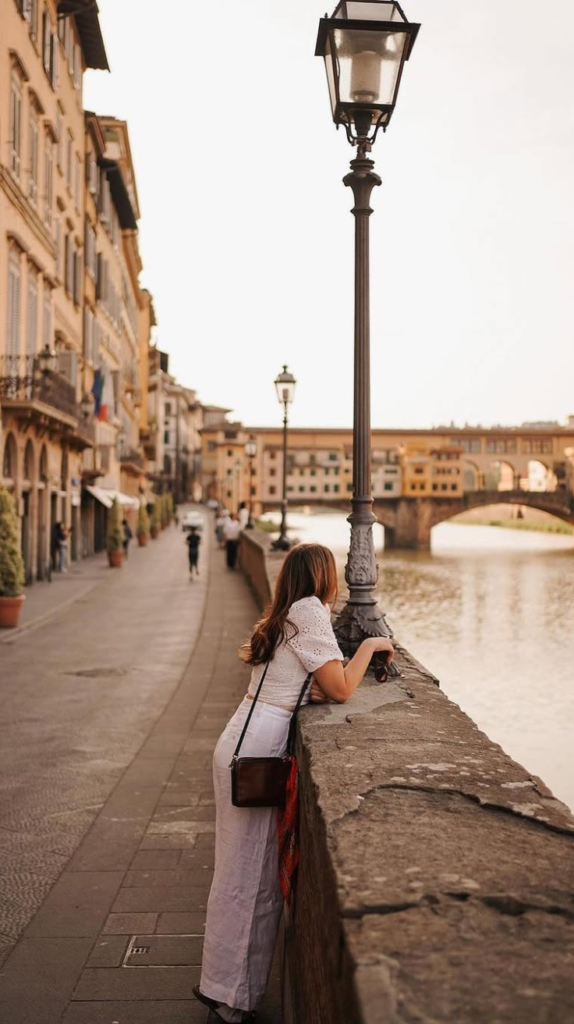
Walking along the Arno River is one of the most serene and picturesque experiences in Florence. This iconic river winds its way through the heart of the city, offering stunning views of historic landmarks, charming bridges, and the timeless beauty of Renaissance architecture.
Start your stroll near the Ponte Vecchio, Florence’s most famous bridge, adorned with shops selling gold and jewelry. From here, you can admire the river’s gentle flow and the reflections of the city’s buildings shimmering in the water. As you continue along the riverbanks, you’ll encounter quieter spots perfect for a peaceful moment or a photograph.
The Lungarno, the streets flanking the river, is lined with elegant buildings, cafes, and boutique shops. Walking westward, you’ll pass under the arches of the Ponte Santa Trinita, another architectural marvel, known for its graceful curves.
A walk during sunset is particularly enchanting, as the sky lights up in shades of pink and gold, creating a magical atmosphere.
For a longer walk, cross to the Oltrarno district, where the riverbanks are less crowded, and the views of the city skyline are spectacular. Along the way, you can enjoy hidden gems like artisan workshops and tranquil green spaces.
Practical tips: Wear comfortable shoes and bring a camera or smartphone to capture the views. Early mornings or evenings are ideal for a quiet and cooler walk.
Visit the Charming Fiesole
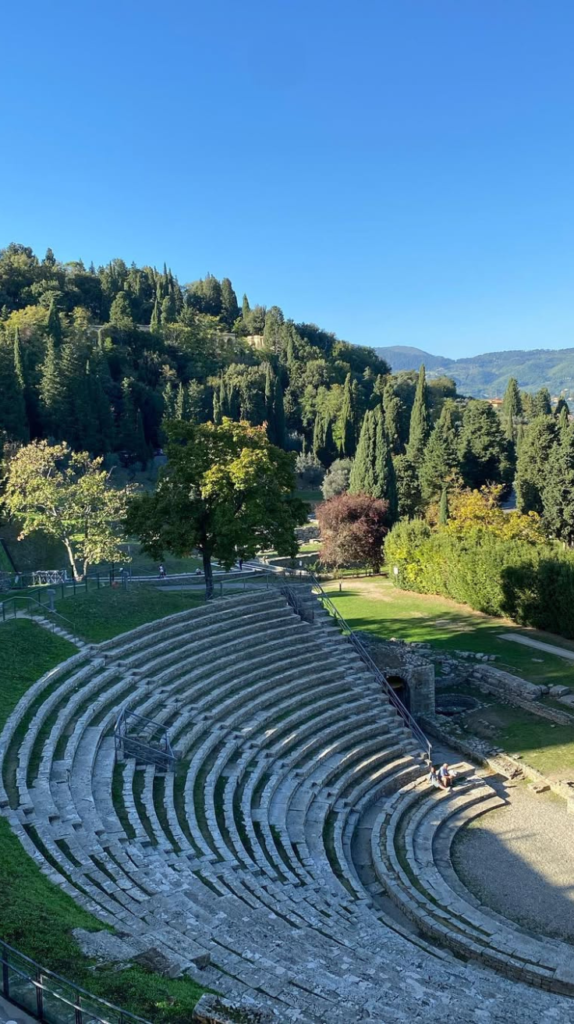
Perched on a hillside overlooking Florence, Fiesole is a charming Tuscan town that offers a peaceful retreat from the hustle and bustle of the city. Just a short drive or bus ride from Florence, Fiesole is renowned for its rich history, stunning views, and tranquil ambiance.
Fiesole’s origins date back to the Etruscans, and remnants of this ancient civilization can be explored at the Roman Theater and Archaeological Site, where well-preserved ruins include a Roman amphitheater, baths, and Etruscan walls.
The site also features a museum with artifacts that provide fascinating insights into the area’s history.
One of the town’s highlights is the Monastery of San Francesco, located at the highest point of Fiesole. The uphill walk to the monastery is rewarded with sweeping views of Florence and the surrounding countryside. The monastery itself is a serene haven with modest interiors, a small museum, and a tranquil garden.
Fiesole’s central square, Piazza Mino, is perfect for enjoying a coffee or gelato while soaking up the relaxed atmosphere. For nature enthusiasts, the hills surrounding Fiesole offer hiking trails that meander through olive groves and cypress trees.
Practical tips: Visit in the late afternoon to enjoy the sunset over Florence. Bring comfortable walking shoes for exploring the steep streets and archaeological sites.
Take Cooking Classes in Florence
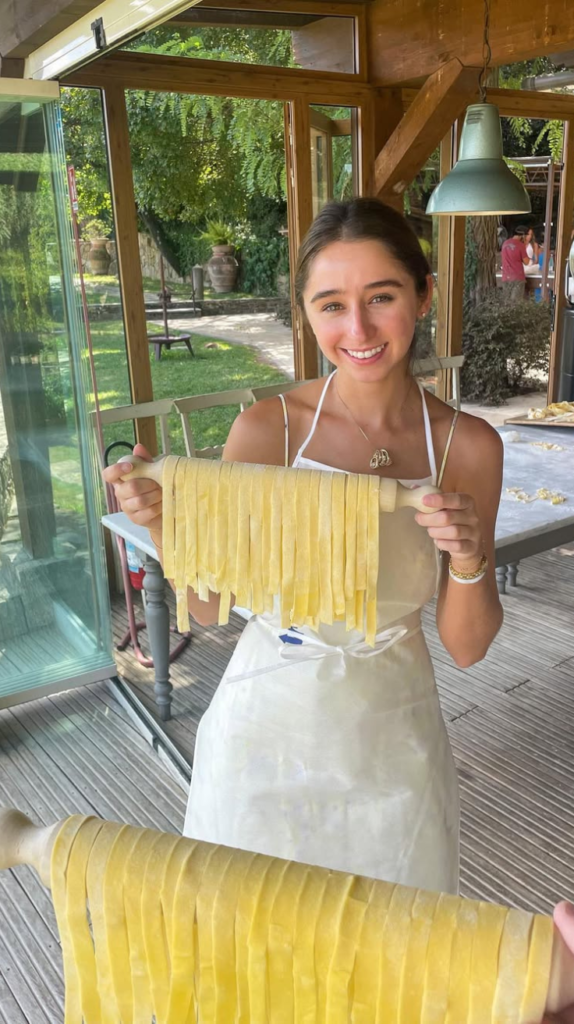
Taking a cooking class in Florence is a delightful way to immerse yourself in the region’s culinary traditions while creating lasting memories.
Known for its simple yet flavorful dishes, Tuscan cuisine emphasizes fresh, local ingredients and time-honored techniques. Participating in a cooking class allows you to bring a piece of Florence home by learning to prepare authentic Italian dishes.
Most cooking classes begin with a visit to a local market, such as the bustling San Lorenzo Market or Sant’Ambrogio Market, where instructors guide you through selecting the freshest seasonal produce, aromatic herbs, and high-quality meats or cheeses.
This is a great opportunity to learn about Tuscan ingredients and traditions while experiencing the lively atmosphere of a Florentine market.
In the kitchen, you’ll master the art of making fresh pasta, such as pappardelle or ravioli, and iconic dishes like ribollita (a hearty bread and vegetable soup) or bistecca alla Fiorentina (Florentine steak).
Many classes also include preparing desserts like tiramisu or cantucci (almond cookies) paired with vin santo. Under the guidance of skilled chefs, you’ll learn tips and techniques that elevate your cooking.
Practical tips: Book classes in advance, especially during peak seasons. Opt for small-group sessions for a more personalized experience. Classes typically end with a communal meal where you can savor your creations with a glass of Tuscan wine—a perfect way to round off the experience.
Explore Florence at Night
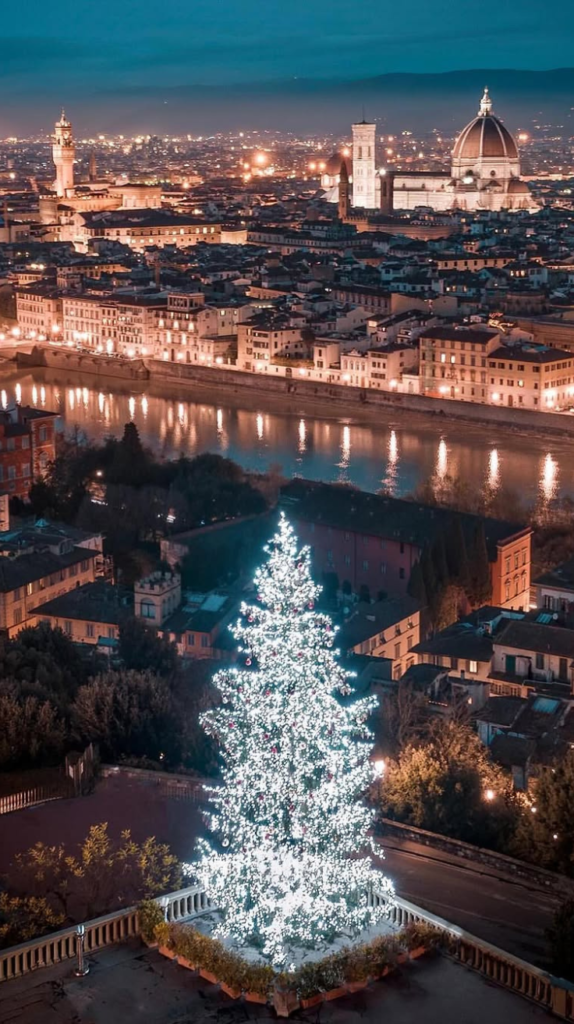
Florence at night transforms into a magical cityscape, offering a blend of romance, tranquility, and enchantment. As the sun sets and the streets light up, the city takes on a new personality, perfect for leisurely exploration and memorable moments.
Begin your evening at Piazzale Michelangelo, where the twinkling lights of Florence spread out below, offering breathtaking panoramic views of the illuminated Duomo, Palazzo Vecchio, and Ponte Vecchio. The view is even more stunning during the blue hour when the sky transitions to twilight.
Stroll through the historic center, where iconic landmarks like the Cathedral of Santa Maria del Fiore (The Duomo) and Giotto’s Campanile are beautifully lit, highlighting their intricate details against the night sky.
The Piazza della Signoria, with its statues and the majestic Palazzo Vecchio, exudes a captivating atmosphere that feels almost otherworldly at night.
The Ponte Vecchio, glowing with warm lights, is another must-visit. The reflections of the bridge and its historic shops shimmer in the Arno River, creating a picture-perfect scene. Musicians and street performers often add a lively touch to the evening.
End your night with a leisurely walk along the Arno River or relax in a local cafe with a glass of Tuscan wine or a decadent gelato. Florence at night is quieter and less crowded, allowing for an intimate and peaceful experience.
Practical tips: Dress warmly during cooler months and wear comfortable shoes for walking. Bring a camera to capture Florence’s stunning night views and consider a guided evening walking tour for historical insights.
Wrapping Up
Florence, the cradle of the Renaissance, offers an unparalleled blend of history, art, and culture that captivates every traveler who visits.
From the awe-inspiring architecture of the Duomo and the timeless artistry of Michelangelo’s David to the serene beauty of the Boboli Gardens and the bustling charm of San Lorenzo Market, the city is a living museum brimming with unforgettable experiences.
Strolling along the Arno River, marveling at sunset views from Piazzale Michelangelo, or savoring authentic Tuscan cuisine at a cozy trattoria are just a few of the ways to immerse yourself in Florence’s magic. Each corner of the city reveals a story, a masterpiece, or a culinary delight, ensuring that no two visits are ever the same.
Whether you’re admiring the treasures of the Uffizi Gallery, exploring the hilltop retreat of Fiesole, or taking a cooking class to learn the secrets of Italian gastronomy, Florence leaves an indelible mark on your heart.
As you plan your journey, remember that Florence is more than just a destination—it’s an experience. Take your time to explore its streets, engage with its history, and soak in its atmosphere. In Florence, the beauty of the past seamlessly blends with the vibrancy of the present, creating memories you’ll cherish forever.
